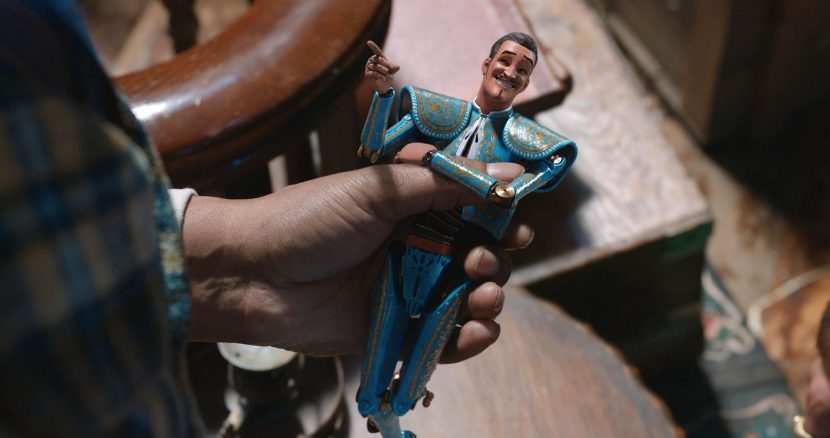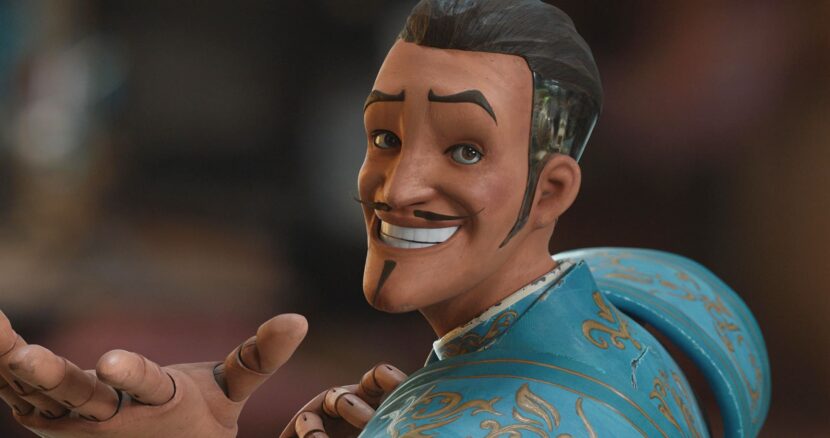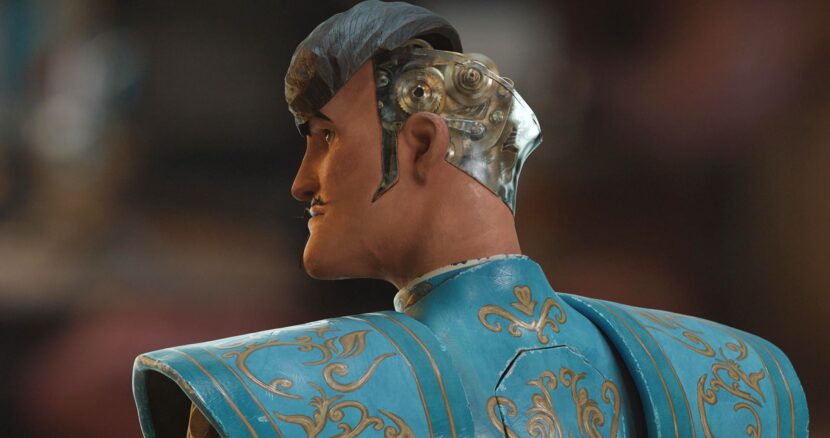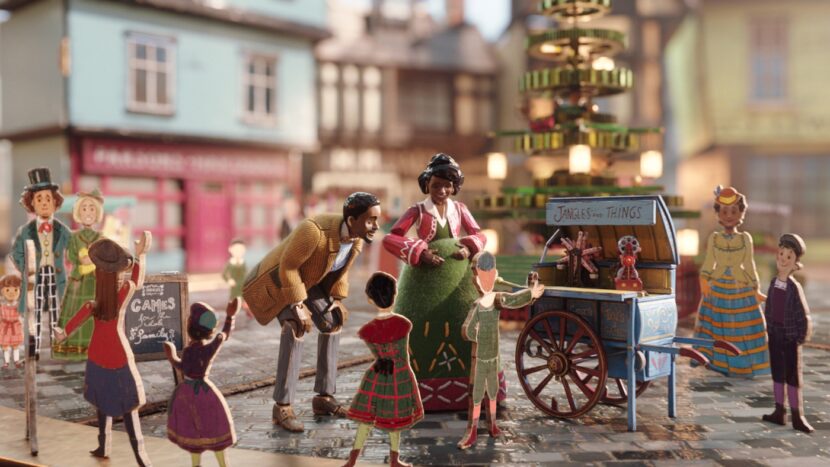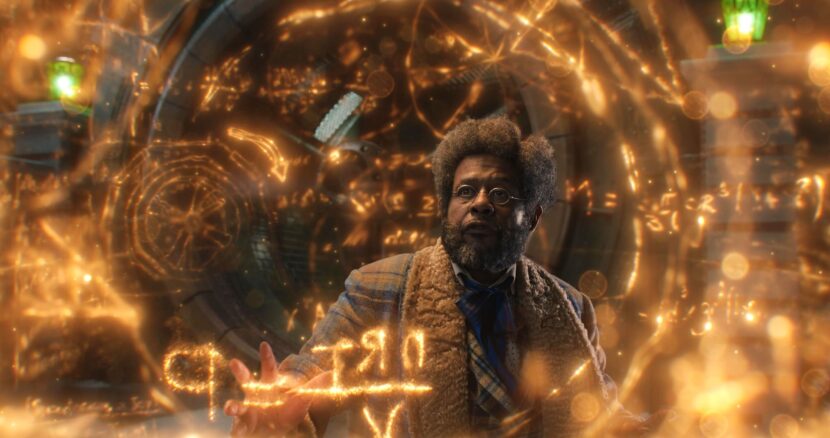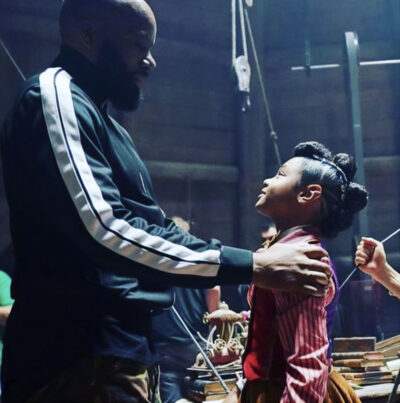
Award-winning studio Framestore delivered the ‘spellbinding’ VFX for Netflix’s Jingle Jangle: A Christmas Journey. The film was written and directed by David E. Talbert, produced and featuring music by John Legend. The holiday film called for a deft mix of storybook wonder, intricately-crafted CG characters and extensive environment work.
The film featured a stellar cast including Forest Whitaker, Madalen Mills, Keegan-Michael Key, Phylicia Rashad, Anika Noni Rose, Ricky Martin and Hugh Bonneville. The overall VFX Supervisor was Brad Parker, Framestore’s VFX Supervisor was Carlos Monzon (Paddington), along with Animation Supervisor Eric Guaglione. Framestore was the lead VFX vendor. The film had some 600 visual effects shots, with some, such as the storybook sequences were very long and complex single shots. Parker (ex-DD) had worked with Framestore LA as a studio VFX supervisor, and 2nd unit director in the past and was very familiar with their depth of talent and their pipeline, but not this particular team. Parker has just returned from ” directing a pretty massive second unit for The Batman, which is loads of fun,” he explains. “I split my time between directing and visual effects. I love them both.” As Parker had not worked directly with the specific team members and animators, he flew out “to meet Eric and Carlos and the entire team and kind of get a sense of who all the artists and animators were.” This proved fortuitous as later in the process the team would need to work remotely due to COVID. Framestore had key staff on the project in Canada and London, while Parker was based in LA.
The film celebrates the work of a diverse cast and this was also reflected behind the scenes with the crew. Framestore joined the project in April 2019 and led the visual effects/character work. The Framestore team alone had artists from 49 nationalities working on the film. The team at Framestore clearly feels very proud to be a part of this project, and the VFX team acknowledges that the film itself is making a statement and one that is very timely. “It was a great time to be involved with the project, and we applaud it,” commented Monzon. In an industry that can often fall short on inclusion on both sides of the lens, Jingle Jangle: A Christmas Journey effortlessly delivers a wonderful story and a strong positive message of diversity.
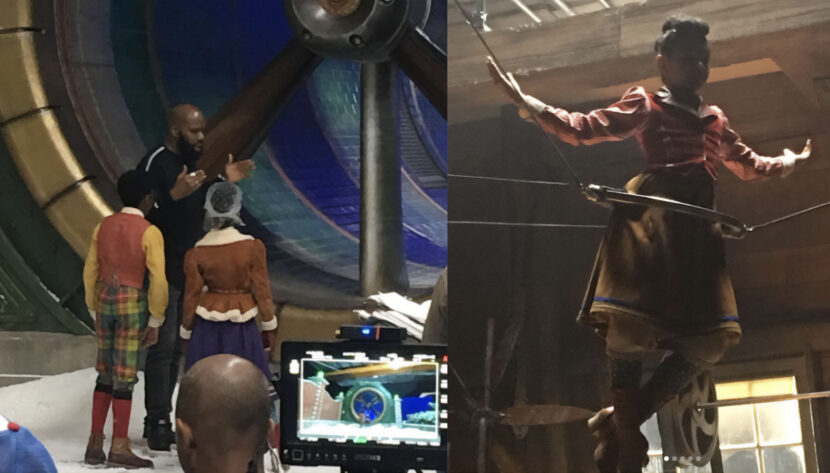
Framestore completed about 350+ VFX shots, key were two magical toys: charismatic yet nefarious matador Don Juan Diego and the ultra-cute Buddy 3000. “Getting the chance to work on these characters from initial drawings to their walking, talking final iterations really spoke to the toymaking theme of the film,” says Monzon. “Because we wanted Buddy and Don Juan to be living, breathing toys the design work was painstaking and incredibly intricate, with the team laboring over the characters’ inner workings and how the materials with which they were engineered would interact and operate if they magically came to life.’
Buddy 3000
‘Buddy 3000’ is Jeronicus Jangle’s most beloved creation – a playful, childlike invention whose heart magically lights up when he feels warm and loved. “Our brief was to create a toy that was innocent, with a child’s demeanor,” says CG Supervisor Britton Plewes. “We had to find ways to convey joy, excitement, and surprise solely through his eyes, so we paid a lot of attention to reflections, lens elements, and subtle eye movements to forge a sense of emotional connection between Buddy and the other characters.”
“Animating a hardbody character and projecting human-like aspects onto him was quite challenging,” adds Monzon. “It meant we had to make some design changes that would allow us to achieve the full-range in motion required. For example, Buddy’s heart required an extensive amount of rigging so that it looked mechanically correct when it moved and rotated. Also, he’s a squat, bulky character but he needed realistic joints and bends so he could achieve that seamless performance.” One of Buddy’s traits is that his energy is fueled when those around him believe in magic; that’s when he comes alive and levitates. “We found a way to explain the levitation and movement by introducing an out-of-balance wobble during key moments and showing that something mechanical was happening, which created a scene full of magic yet grounded in scientific and mechanical reasoning,” concludes Guaglione.
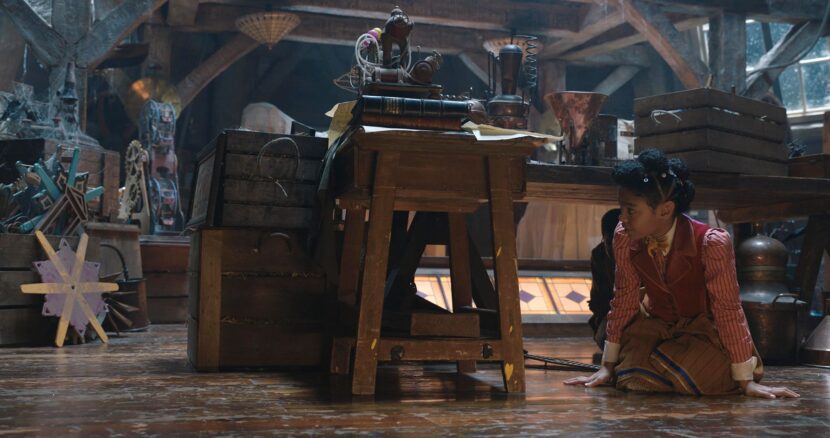
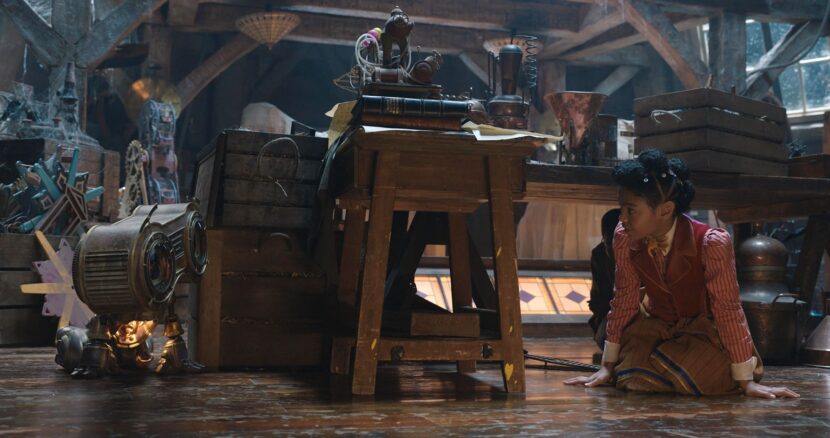
For the animation style the team looked at a range of references from Stop motion and films such as A Nightmare Before Xmas, as reference for Don Juan, and films such as Short Circuit and Wally for Buddy 3000 reference. “We started observing those things that made them feel mechanical, but not overly so because we still wanted Buddy to be lovable, very interesting in movement, rather than jerky,” explains Guaglione.
One solution came in how the team animated between keyframes. Rather than flowing the animation curves smoothly, Guaglione and the team looked at something that had more linear types of movements between key poses, more mechanical movements. “More like you turn a motor on – and then you turn the motor off. As a result of something moving like that to a stop, once it hits then it stops abruptly with a little overlapping secondary animation.”
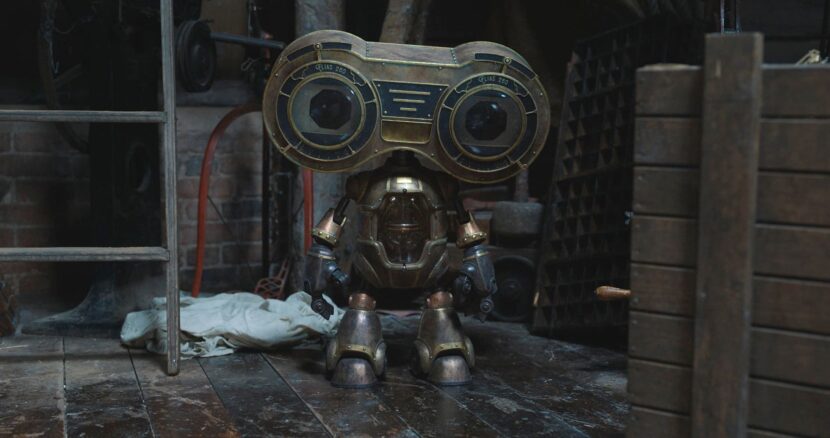
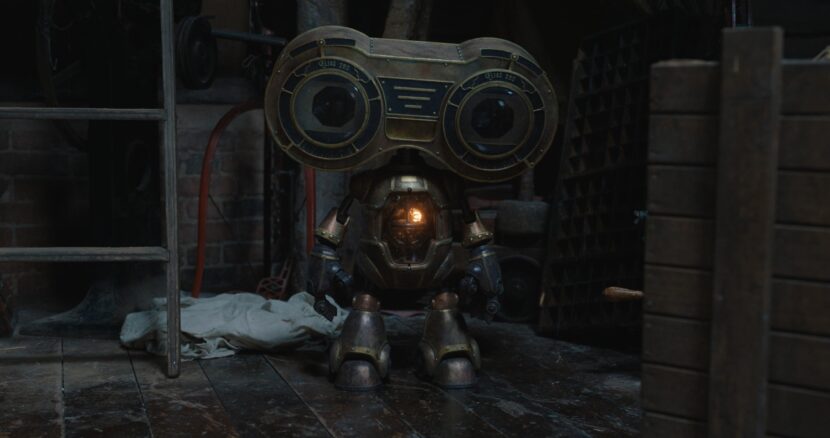
Both for Don Juan and the Buddy 3000 the team needed to study how the characters could move, given they should have rigid bodies and not inherent facial or body flexibility. The team spent time to respect the design, but still solve movement in such a way that “they moved in the right way,” Guaglione recalls. “While both characters had to portray something dramatically to tell the story or comedically, …we still wanted to make it feel like it was a believable movement for mechanical characters.”
Don Juan Diego
“I always wanted to work on a musical,” Parker fondly points out. “I’ve got a sweet spot for musicals, films like Pennies From Heaven and things like that. I just love them and I love what they can do emotionally.” Parker is fascinated at how visuals can drive what people feel and the important way music is a part of that. “To combine what essentially is a visual effect, such as Don Juan singing and dancing with great music – was an incredible challenge because the bar was so incredibly high. Parker thinks that “the music is pretty phenomenal and is one of the stars of this movie. So it was clear that the visuals needed to rise to that level and had to resonate on that same level”.
Don Juan Diego, a devious 12-inch matador voiced by Ricky Martin, embarks on a mission to halt a plan that would see him mass-produced. “Don Juan is an extravagant extrovert whose emotions ping-pong between arrogance, fear, and frustration,” explains Animation Supervisor Eric Guaglione. “We needed to convey his melodramatic, larger-than-life personality in a way that would complement the live-action cast and plate footage”. Guaglione was on-set for the plate photography of the Don Juan Diego sequences. Parker joined after principle photography.
Based on concepts given by the client, Framestore’s art department helped visualize the fully CG character. Ricky Martin was not motion captured but his performance informed the animators, “we got pieces of Ricky Martin recording the song, a dancer doing pieces of choreography plus other reference and we were able to slowly coalesce and bring all those things together visually into what this character should be,” explains Parker. “I’ve got to hand it to Eric. I think, you know, he can take all the credit there in terms of keeping buddy and Don Juan, incredibly cohesive and following their developmental arc through the film. It’s an important thing as an animation supervisor to understand story and how characters track through a scene.”
In order to perfectly bring to life their miniature marionette, the Framestore team immersed themselves in reference footage, both of real-life matadors and models depicting them. “We became experts in matadors and flamenco dancing; closely studying how interrelated their theatrical performances in the bullring and dance poses were,” says Guaglione. Based on those studies, Guaglione and his team created a reference library of movements that were crucial when animating Don Juan’s complex, miniaturized movements. “Our team of animators filmed themselves acting out the roles, to really get into the heads of our characters and understand the emotional journeys they were taking,” says Guaglione.
The team was also tasked with acting out the complex, 100-shot choreography for the film’s opening sequence, which sees Don Juan Diego come to life and experience a rollercoaster of emotions. “David entrusted us with devising the character’s performance and personality throughout the sequence,” says Guaglione. “It was a huge task, both in terms of the trust he’d placed in us and the need to deliver a polished, note-perfect musical sequence.”
Framestore started with a very lean crew to get the character up and running and doing some tests. This tight unit was scaled up once the script and the character’s personality were finalized. “There was a rewrite on the film which impacted the Don Juan character primarily,” comments Guaglione “So we ended up reanimating all of Don Juan, very late in the game.”
Guaglione explains, “David (the Director) gave a good deal of latitude when it came to developing Don Juan Diego, especially when it came to working with him to make the character a more ‘likable’ villain – I had the chance to fly out to LA and be with David while he worked on the script, teasing out a more comedic and vulnerable side to Don Juan.”
“If you just play Don Juan straight, he’s incredibly unlikeable,” comments Parker. “He’s just a little robot, who’s a jerk, but if you make him fallible like he’s a bit of a ‘metro-sexual’, he’s a bit pompous and self-centered, but then he’s also really imperfect”.
The modeling and rigging team added many subtle details that aided the animators. Parker points out that, “if you study how Don Juan speaks, you’ll find that Eric and his team did a lot with the mechanized nature of his jaw and how it snaps in a kind of spring-loaded way. There’s a lot of secondary action in the way that he might spin and dance and stop with follow-through where the gears aren’t fully tightened and things are a little bit loose, which gives the illusion that there’s play in his joints.” Parker adds that all these types of small things were beautifully hand-animated. “I have to say that the patience of the animation team on this film was phenomenal. Maybe part of that was that everybody was working from home and really thrilled to be busy and have this distraction of a wonderful job to pour themselves into when we were all in COVID lockdown.”
Part of the issue with the initial work was the lighting. On-set there was a prop stand-in figure for the actors to establish the correct eye-line but this prop Don Juan was primarily lit with top light. When the VFX team matched the on-set lighting digitally, Don Juan looked too evil. “He ended up having a lot of top light and so Don Juan ended up looking very menacing,” points out Monzon. The team then slowly started adding the character’s own beauty lighting, which showed more of the animation, more of his very expressive face. As this happened and the character had his own beauty lighting solution, his final more ‘comic villainy’ appeared.
Not only did the Framestore team need to address the special lighting needed onto the digital characters, but often they also had to simulate light bouncing off them onto the set. The glass bottles in the shot below and other mirror objects needed to reflect the characters and be illuminated by their bounce light and ambient colors. “We had to add that because it was not there when they shot it, – it was just clean”, commented Monzon.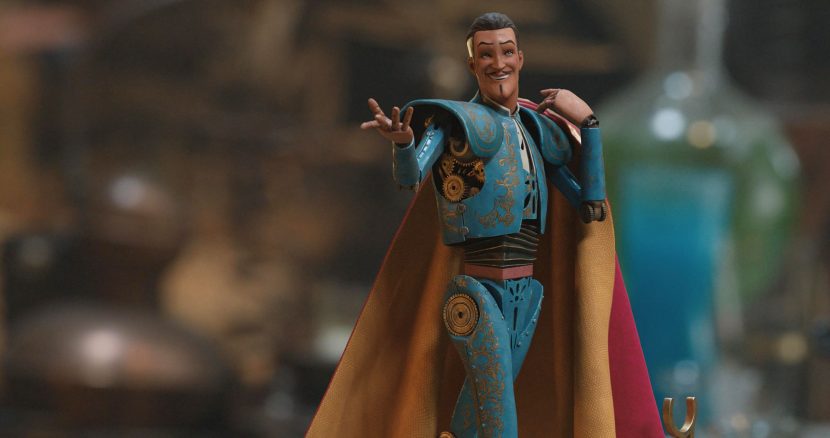
To animate the right motion the team looked for ways to create very fast motion. The very quick movement speaks to the scale of the character and also his mechanical snappy mechanism. For the poses, the animators naturally leaned into the character’s flamboyancy. “I really tried to get into David’s head in terms of what he was trying to get out of these characters,” recalls Guaglione. David, the Director, was not very professionally familiar with VFX and animation. “We were there for him to help him understand what the process was. I built up the whole process from an understanding of: what is the character thinking? What is the character doing?” Guaglione and the animators acted out scenes and then showed very simple animation tests to make sure that they had the right flavor of the character. “We blocked out entire sequences using that methodology of – acting out, reference, doing blocked animation tests, all based on various ideas that we brought for those performances,” adds Guaglione. Framestore’s animators, like the best animators in the world, provide performances. They are effectively the actors of Don Juan and Buddy. As such they worked hard to understand the backstory, intent, and meaning of their character’s scenes and then provide more than pantomime performances, they try to provide subtle sub-text, that allows both villainy and comedy, pathos and action to these central characters. “The approach I always take with our animators is to get them to understand what the character is thinking. That’s one of the reasons I really encouraged them to do their own acting reference,” says Guaglione. “That’s what you’re really animating, the emotion of what the character is thinking.”
Parker adds “I’ve got to hand it to Eric (Guaglione), I think he can take all the credit in terms of keeping Buddy and Don Juan incredibly cohesive and following their character developmental arc through the film. It’s an important thing as an animation supervisor to understand story and how characters track through a scene.”
World-Building
As the film follows the story of toymaker Jeronicus Jangle (Forest Whitaker), the director Talbert worked closely from early concept art through to final VFX with Framestore not only on the characters but on the whole world-building. For example, the team was tasked with orchestrating whimsical choreography and creating a fully digital 18th century and CG-snow filled town, complete with a factory and toy store. “Framestore came on board early on. They helped me develop the two fully CG characters and flesh out the ideas so I could see them on screen – the movement, the mechanics and the theory behind how they would come to life,” commented Talbert.
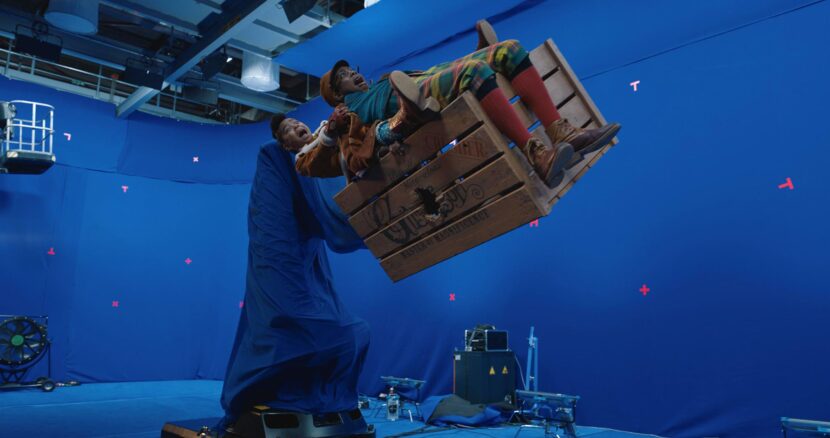
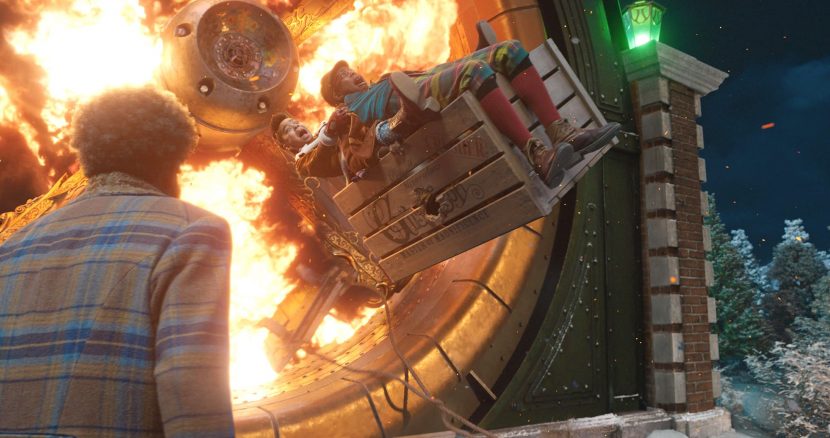
“They built some pretty impressive sets. I was quite surprised by what the crew built,” says Monzon. “When I showed up on-set, I was expecting just the facade, but everything inside was also built, so we had a lot of inspiration to what needed to be built out further for all the digital environments.”
Framestore also delivered several animated storybook sequences for Jingle Jangle: A Christmas Journey. The storybook structure was used in the top and tail of the film as well as narrative bridges for important parts of its story around the eccentric toy-maker. These fully CG sequences were led by animation director Ian Spendloff and VFX supervisors Tim Jenkinson and Johannes Sambs. The team created nearly eight minutes of fully CG animation.
All the sequences with buildings were designed to fold up and self-assemble with visible hinges and joins, designed as a cross between theatrical flats and tiny mechanised dollhouses. The team developed a system to make each house build in a unique way. Even if the audience doesn’t see a structure being assembled, it had to look like it could have existed. The background characters that fill these environments were flat hand-drawn illustrations fed through a custom-built procedural tool that turned them into 3D assets, adding texture and basic appendage joints – plus additional wear and tear to make the models look aged.
Although the technical execution is impressive, Parker feels that most of the things that were challenging and difficult on this film were “probably creative and realizing complex creative ideas visually.”
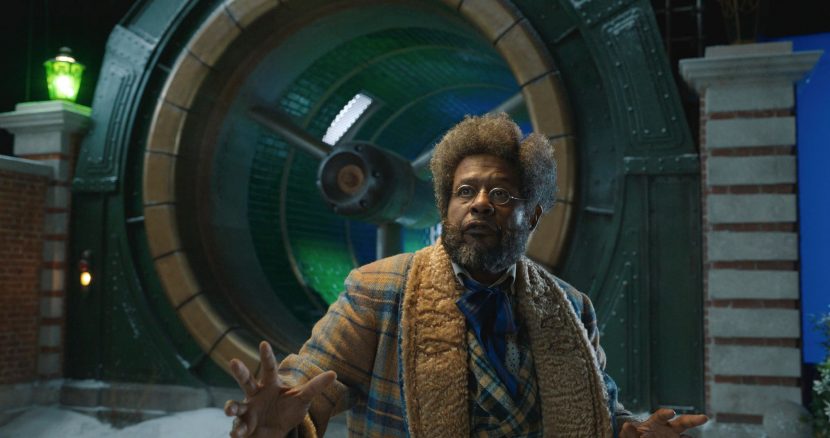
Parker enjoys working with Directors who are not so familiar with VFX. “With my background and experience as a director and a visual effects artist, I can help translate some very technical and difficult concepts into things that a filmmaker might respond to or resonate with”. Parker also believes it is important for CG supervisors and visual effects supervisors to be able to think in story and performance terms, and “not just impress with technical prowess, but be able to communicate on a story, character and emotional level. To make sure that “everything that we are talking about turns into pictures that resonate with an audience”.

